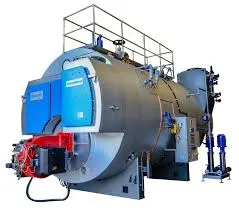
Yan . 02, 2025 11:11 Back to list
steam boiler cleaning
Cleaning Steam Boilers Importance, Methods, and Best Practices
Steam boilers are vital components in various industrial and commercial applications, providing the necessary steam for heating, power generation, and numerous manufacturing processes. However, like any mechanical system, steam boilers require regular maintenance to ensure efficiency, safety, and longevity. One of the most crucial aspects of this maintenance is cleaning. This article explores the importance of cleaning steam boilers, the methods employed, and best practices for achieving optimal results.
Importance of Cleaning Steam Boilers
The primary role of a steam boiler is to convert water into steam efficiently. Over time, various deposits can accumulate inside the boiler, including scale, sludge, and corrosion byproducts. These deposits can severely affect the boiler's efficiency and performance. For instance, scale buildup on heat exchange surfaces can hinder heat transfer, leading to higher fuel consumption and increased operational costs. Additionally, poorly maintained boilers are at a greater risk of failure, which can result in costly repairs, downtime, or even hazardous situations.
Cleaning also helps to maintain the quality of the steam produced. Impurities from the boiler can contaminate the steam, affecting the processes that rely on it. This is particularly critical in industries such as food processing and pharmaceuticals, where steam purity is essential.
Methods of Cleaning Steam Boilers
There are several methods for cleaning steam boilers, each suited to different types of deposits and levels of contamination. Here are some common approaches
1. Chemical Cleaning This method involves using specialized chemicals to dissolve and remove scale and other deposits. Acidic cleaning agents are often used for hard scale, while alkaline cleaners can be effective against organic substances. Chemical cleaning is typically carried out during scheduled maintenance shutdowns to minimize operational disruption.
2. Mechanical Cleaning Mechanical cleaning methods include the use of brushes, scrapers, or abrasives to physically remove deposits. This method can be labor-intensive and may require partial disassembly of the boiler to access hard-to-reach areas. However, mechanical cleaning can be effective for both heavy and light deposits.
3. Hydroblasting This technique employs high-pressure water jets to remove scale and debris from the boiler surfaces. Hydroblasting can be highly effective, especially for thicker deposits, and it minimizes the need for chemical agents. However, it is essential to ensure that hydroblasting does not damage the boiler components.
steam boiler cleaning

4. Ultrasonic Cleaning This method uses high-frequency sound waves to produce microscopic bubbles in a cleaning solution, which collapse and create shock waves that dislodge deposits. Ultrasonic cleaning is particularly effective for intricate components and can be used for both small-scale and large-scale cleaning jobs.
5. Blowdown Routine blowdown is a preventive maintenance practice where a portion of the water in the boiler is drained to remove concentrated impurities. Regular blowdown helps to limit the buildup of sludge and scale, enhancing boiler performance.
Best Practices for Steam Boiler Cleaning
To ensure effective cleaning and maintenance of steam boilers, consider the following best practices
1. Regular Maintenance Schedule Establish a routine maintenance schedule that includes cleaning. Early intervention can prevent severe buildup and extend the life of your boiler.
2. Monitor Water Quality Maintain high-quality feedwater to reduce the risk of scale and other deposits. Implement a water treatment program to remove impurities before they enter the boiler system.
3. Use Proper Cleaning Agents Select cleaning agents based on the type of deposits present and the materials of the boiler. Always follow manufacturer recommendations to avoid damaging components.
4. Conduct Inspections Regular inspections help identify issues before they escalate. Look for signs of scaling, corrosion, or other problems that may indicate necessary cleaning.
5. Train Personnel Ensure that personnel responsible for cleaning and maintaining boilers are adequately trained in best practices and safety protocols.
In conclusion, cleaning steam boilers is a critical aspect of maintaining their efficiency and safety. By employing the right cleaning methods and following best practices, operators can ensure optimal performance, prolong the life of the boiler, and avoid costly emergencies. Regular attention to cleaning not only enhances the operational effectiveness of boilers but also contributes to a safer and more productive working environment.
-
High-Efficiency On-Off Steam Boiler for Reliable Heating Solutions Compare with Off Boiler Water Heaters & Steam Generators
NewsJun.24,2025
-
Best Steam Boiler Design PDF Free Design Calculation & Diagram Downloads
NewsJun.10,2025
-
Hot Boiler Water Heater Efficient Heating Solutions for Home & Commercial Use
NewsJun.10,2025
-
Steam Boiler Safety Devices High-Quality Protection Valves
NewsJun.10,2025
-
Ultimate Steam Boiler Checklist for Safety & Efficiency
NewsJun.10,2025
-
Optimal Hot Water Boiler Temperature Setting Guide
NewsJun.10,2025
Related PRODUCTS






















